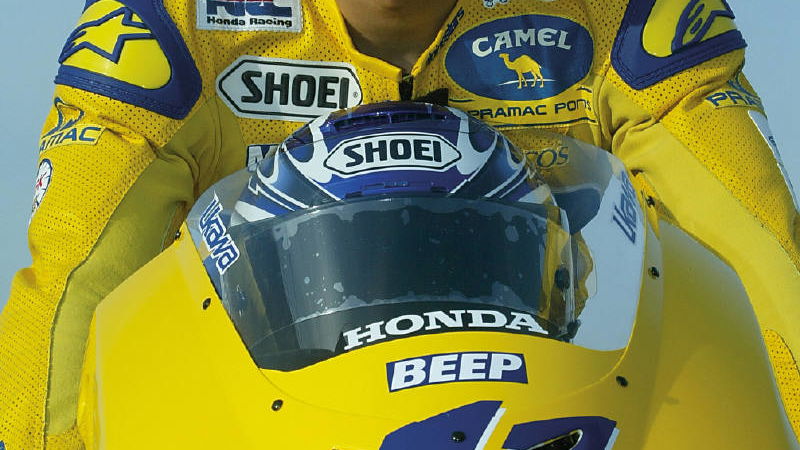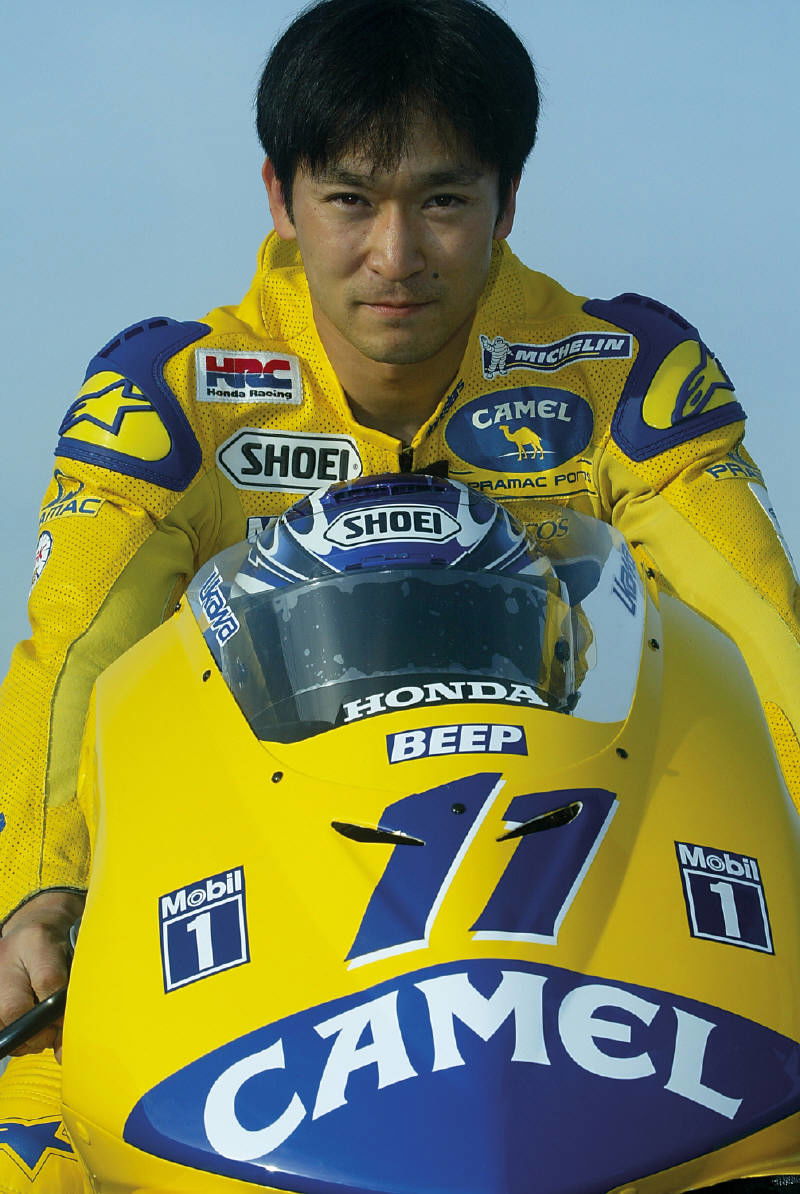320 million welcomed on board...
Tohru Ukawa might knows he's popular, but even the mild mannered Japanese rider would be surprised to learn that around 320 million people cheered as he suddenly appeared underneath the elbow of Brazilian Alex Barros in Jerez.

Tohru Ukawa might knows he's popular, but even the mild mannered Japanese rider would be surprised to learn that around 320 million people cheered as he suddenly appeared underneath the elbow of Brazilian Alex Barros in Jerez.
As Barros, the last of the late brakers, prepared to throw his Yamaha into the right hand bend at the top of the start-finish straight in the closing stages of the Spanish Grand Prix, a yellow Camel Pramac Pons RCV, glinting in the sunshine, suddenly appeared in the gap between his right elbow and body - and 320 million people throughout the world sat up and took notice.
The scenario could have been from a Christmas pantomime as almost in unison, but in many different languages, the watching fans warned Barros he was under attack (''he's behind you'') but that's the power of television.
Week after week a staggering 320 million viewers in 208 countries witness the 45 minute adrenaline rush of a grand prix race from so many different angles that they have been known to crash their sofas and chairs trying to stay on board with the riders. The late Barry Sheene used to get Australian television viewers actually leaning with the riders, so good were the on board images being beamed back to their screens.
MotoGP is made for television and modern day technology has brought a completely new context to the coverage and is reflected in the viewing figures throughout the world.
Last year 3420 hours of coverage was screened in 208 countries. An average 320 million viewers in those countries watched live or same day delayed transmissions of each grand prix through 43 networks, along with a further 38 outlets offering edited or highlight packages.
All this adds up to a television audience of 5130 million for the 16 round MotoGP season. This year the figures will be even more impressive with television giants RTL and the BBC joining the list of broadcasters wanting to bring the excitement and drama of a MotoGP race into the living room of their viewers.
Just watching the Spanish race last weekend through the eyes and ears of a television camera showed just why so many viewers are switching on. It was certainly not the closest race of the season and not as exciting as the race two weeks previously in South Africa, but the on board cameras brought the race to life.
There was the new camera on the back of World Champion Valentino Rossi?s Honda pointing forward. Although you saw plenty of the World Champion?s bottom it brilliantly illustrated just how hard he has to work shifting his weight constantly to get the maximum from his machine.
Max Biaggi may have had a lonely ride into second place on the Camel Pramac Pons Honda, but you rode with both him and Rossi as they fought in the early stages of the race while Sete Gibernau's ill timed exit into the gravel was shown from the saddle of his Honda. Throw in images of Alex Barros?s elbows, John Hopkins?s gear changing boot and the face of Troy Bayliss through the tinted visor and it's easy to see just why the viewers are hooked.
It's compelling television that has been made possible by modern technology. It does not seem long ago that riders were completing practice laps with huge video cameras strapped to their backs to bring any action to the screens. Today tiny cameras no bigger than a small cigarette lighter can be places anywhere on the bike pointing in any direction.
The images from these tiny cameras are then beamed up to the helicopter, which is hovering above the circuit. It relays them to the television control room and then onto your screens. The angle and lean of the bikes and the physical battle facing the riders through the 45 minutes of action is never better illustrated than by these cameras who have revolutionised MotoGP coverage.
Clever switching by the producer can bring a battle between two riders right into the living room. That moment when you are riding on board with a rider who has dived up the inside of another as they brake for the bend. You hold your breath waiting for other rider to appear across the front. If he doesn't you know your man has moved up a place as Ukawa did at Jerez, witnessed by such a massive audience.
Switching from the front of the pursuer to the back of the leader has come another feature of the coverage while quick use of the circuit cameras shows exactly what has happened from all angles. At Jerez the 30 on board cameras were supplemented by 20 static cameras situated round the circuit and nothing escaped the notice of the viewers.
Three hundred and twenty million viewers can't be wrong, while furniture repair shops are doing a roaring trade on Monday mornings mending all those broken chairs following another weekend of on board MotoGP coverage.
The next thing will be the introduction of portable gravel traps into your living room just to make viewers feel even more like a rider.


